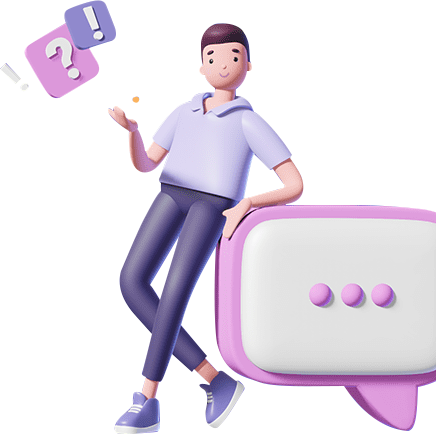There are now millions of online apps for the growth-oriented business website design and development sector. To have a great online presence, your website must be 360 degrees competent to attract new clients and keep them satisfied. The outcome of your website is determined by several aspects, including speed, aesthetics, usability, content, maintenance, device compatibility, the web app development framework you use at the backend, and more.
With the advancement of website technologies, web developers now rely on designing websites using the most popular frameworks/technology to achieve the greatest outcomes from their online presence. However, it is difficult to choose the most dependable backend web application framework, however as there are numerous frameworks on the market nowadays. And each framework has its unique features, benefits, drawbacks, and most useful applications. A better backend framework choice can speed up the growth of your web business, while a wrong selection can lose you money and effort.
If you’re seeking the best web app framework to utilize in 2022 for your web project, you’ve come to the right place. In this blog, we’ll go over the ten most popular web app frameworks. We’ve compiled and examined information from a variety of sources to create a list of popular backend frameworks.
What is a Backend Web Framework?
A backend web framework is a software framework that provides a structure for developing web applications. Backend web frameworks typically provide a library or set of libraries that can be used to build web applications. Ruby on Rails, Django, and Express are the most popular backend web frameworks.
Backend web frameworks provide a way to structure web applications. This means that they provide a way to organize code and files. Backend web frameworks also typically provide a way to connect to a database. This allows data to be stored and retrieved from a database.
Backend web frameworks vary in the features that they provide. Some provide more features than others. Some are more opinionated than others. This means that they have a more defined way of doing things.
Ten Best backend frameworks to use in 2022
For the building and management of websites, a framework has become essential. When there are so many options, deciding on one becomes exceedingly tough. We’ve compiled a list of the greatest libraries of backend and frontend frameworks, as well as their various features, that are currently being used for development ease.
Laravel
Although the most popular isn’t usually the best, adopting popular tools has certain obvious benefits. Laravel is a fantastic example of why this is so.
Laravel is a PHP backend framework that resembles a mixture between Django and Ruby On Rails. Like Ruby On Rails, it’s free and open-source. Because it is so commonly used, there are various tools and resources accessible for it. In 2011, Taylor Otwell developed Laravel.
Many other elements of Laravel are shared with the other backend frameworks. Like Ruby On Rails, it’s scalable and secure. It’s also extensively used and simple to learn, making it a viable alternative to Django. Laravel follows the MVC design, making it quick and easy to develop and deploy apps and websites using it.
Django
The most popular Python framework for creating dynamic web applications is called Django. Thousands of Django-based applications may be found on GitHub and Stack Overflow, demonstrating the framework’s enormous popularity among the developer community.
Because it is built on Python, which has been the most popular programming language for many years, the Python web framework is quite popular. This is also true for 2022.
Django follows the MVT (Model-View-Template) Architecture and works on the DRY principle. The DRY policy refers to the “Do Not Repeat Yourself” rule. It promotes the idea of the reusability of code.
Django is used by several well-known companies, like Instagram, Disqus, and NASA, to maintain and develop their backends. Django has a variety of built-in functionality, such as validation, authentication, and messaging.
Ruby on Rails
Ruby on Rails is a web-application framework that includes everything needed to create database-backed web applications according to the Model-View-Controller (MVC) paradigm.
In addition to MVC, Ruby on Rails emphasizes using other well-known software engineering patterns and paradigms, including convention over configuration (CoC), don’t repeat yourself (DRY), and the active record pattern.
The Ruby on Rails framework is composed of many modules, each of which provides a specific piece of functionality. The core modules are bundled with the Rails framework, but many others are available as separate gems.
Express.js
If you’re a JavaScript developer who wants to branch out into backend development, Express.js is a good place to start. It’s a web app development framework with Node.js API. You might become a full-stack developer by knowing simply JavaScript and ExpressJS.
Many large corporations, like Uber, IBM, and Accenture, use Express for backend development. It’s a Node.js web development framework that’s open-source. As a result, it is sadly not suitable for beginners.
To learn ExpressJS, you must first understand Node.js, which is an extremely complicated backend technology that demands a significant amount of time to master.
ASP.NET
ASP.NET is a popular web development platform that can be used to create dynamic web applications for both PCs and mobile devices. Microsoft created it to allow programmers to create dynamic web pages, applications, and services.
Asp.net Core is a new version of the Asp.net framework that is known for its speed, productivity, and power. It is a lightweight and high-performing device. TacoBell, GettyImages, and StackOverflow are just a handful of the well-known organizations that use ASP.NET.
CakePHP
CakePHP is a free and open-source framework for developing web applications. It is written in PHP and released under the MIT License. CakePHP has a built-in ORM (object-relational mapping) system and supports multiple database systems.
Vue.js
Another well-known JavaScript web development framework is Vue.js. Vue is simple to understand and use. Vue.js is a wonderful choice if you’re looking for a good frontend framework and are still learning how to program. It’s also a fantastic fit for designing web application user interfaces.
Vue.js, on the other hand, Vue.js isn’t as easy to integrate as Angular or React because Google, Facebook, or Amazon don’t support it.
Ember
Ember.js is a new JavaScript framework based on the MVVM design concept. It uses general idioms and sophisticated methods to help web developers create extensible single-page applications.
It’s most renowned for being the best web framework, but it can also be used to make mobile and desktop apps. The Ember desktop application is exemplified by Apple Music, a function of the iTunes desktop software.
The Ember developer community is constantly growing, and new updates and features are released regularly. This framework is used by Heroku, Microsoft, Netflix, and Google regularly.
Gatsby
Gatsby is the finest web development framework for 2022. Gatsby is a popular React backend framework. This makes it ideal for creating single-page apps and text-heavy assets such as blogs and landing pages.
Gatsby is a static site generator, meaning it does not connect to a database. This implies you won’t have to be concerned about security. It also develops the fastest and most efficient websites and apps possible.
Backbone
Backbone is a front-end framework for building rich single-page apps that is lightweight and easy to use. It uses the MV* paradigm and somewhat follows the MVC concept. Backbone has only one essential dependency, the Underscore library, and a robust ecosystem that allows client-side building programs.
Frequently Asked Questions
What is the best backend framework for mobile app?
Final Takeaway
In the last word, we recommend learning two frameworks to become a successful full-stack web developer in 2022: the front-end and the back-end. You can select a web development framework based on the programming language you are familiar with or comfortable with.
Django, for example, is a good choice if you know how to code in Python, whereas Laravel is a good choice if you like PHP. All of the frameworks can achieve the same job but in different ways. It is up to the developers to decide whatever structure they prefer. Most developers choose web frameworks based on their programming language experience.




